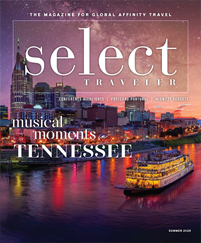America owes a lot to New Jersey.
The colony served as George Washington’s military headquarters for key moments during the Revolutionary War. During that time, victory seemed unlikely for the ragtag bunch of rebel soldiers, which made Washington’s triumph even more impressive.
Groups can engage in the nation’s history at Revolutionary War sites scattered across the state. And the Garden State honors its past beyond the Colonial period at Victorian-era towns, historic beachfronts and one of the country’s most prestigious colleges: Princeton University.
The state also has shopping hubs and beach towns designed to entertain. Groups can forget their troubles on a fun-filled trip to New Jersey.
Morristown
Morristown boasts an impressive list of past residents. Alexander Hamilton, Marquis de Lafayette, Thomas Paine and Washington all helped change the course of history while in town.
Known as the military capital of the American Revolution, the city played a strategic role in the war. To honor the town’s importance, the Morristown National Historical Park became the country’s first National Historical Park.
Though today, the northern New Jersey city offers a charming downtown shopping experience, Washington’s time in the area consisted of struggle and desperation. Groups can learn about how 10,000 Continental Army soldiers endured the war’s most severe winter in Morristown. The park consists of four noncontiguous areas: Washington’s Headquarters, Fort Nonsense, Jockey Hollow and the New Jersey Brigade Area, which includes the Cross Estate Gardens.
After the smash hit “Hamilton” appeared onstage, interest in the Morristown’s Schuyler-Hamilton House quickly grew. Hamilton famously courted Betsy Schuyler in the mansion while he stayed there as a houseguest. Visitors can discover the Colonial-era medical practices in the site’s doctor’s office. Other displays showcase antiques, paintings and historic memorabilia.
Groups can find a more complete retelling of the region’s history at the Morris Museum. The second-largest museum in the state sits inside a Gilded Age mansion with collections such as Native American artifacts, dinosaurs, period costumes and the renowned Guinness Collection of Mechanical Musical Machines and Automata.
While shopping in the pedestrian-friendly town, groups can admire the statues of Morristown Green. Bronze, lifelike sculptures commemorate moments in the town’s history, such as the meeting of Washington, Hamilton and Lafayette in 1780.
Elizabeth and Newark
What do Tommy Hilfiger and Washington have in common? Both help draw visitors to Elizabeth, New Jersey. Thirty minutes east of Morristown and directly west of Staten Island, Elizabeth bills itself as the state’s starting point. Its proximity to the Big Apple and its Colonial past combine to form a city both cosmopolitan and historically reverent.
New Jersey’s fourth-largest city contains the East Coast’s largest indoor outlet shopping center, the Mills at Jersey Gardens. More than 200 outlet stores feature top brands such as Michael Kors, Kate Spade and Coach and offers the country’s largest Tommy Hilfiger outlet. And since New Jersey has no sales tax on clothing, shoppers can find attractive deals. The mall contains two levels of restaurants, shops and attractions, including a multiplex movie theater.
Founded in 1664, Elizabeth has its share of history. Groups can learn more about its Revolutionary ties at Boxwood Hall. Built in 1750 by Elias Boudinot, a director of the U.S. Mint and president of the Continental Congress, the mansion entertained prominent visitors such as Washington, Lafayette and Hamilton. Saved from demolition, it opened in 1943 as a museum with Colonial and Revolutionary War artifacts.
Deemed one of America’s 50 Greenest Cities by Popular Science magazine, Elizabeth boasts 46 parks. Warinanco Park remains the most impressive. Designed by Frederick Olmstead, the 204-acre park contains hiking trails, boat rentals, water features and spectacular fall landscapes.
Elizabeth’s neighbor city, Newark, is New Jersey’s largest metropolis. Eight miles from Manhattan, the city has easy access to New York’s highlight attractions. It also has its own cultural gems. The Newark Museum offers American and Tibetan collections, sculpture gardens, the Ballantine Victorian mansion and a planetarium.
Sports lovers can catch a New Jersey Devils hockey game at the Prudential Center or cheer during a Major League Soccer showdown at the Red Bull Arena.
Princeton
Guests can feel smarter just visiting Princeton. The town’s namesake, Princeton University, put the city on the map as the home of one of the most elite Ivy League schools in the country.
One hour south of Newark, Princeton offers walking tours of its 1746 campus. Guides point out the school’s breathtaking architecture, manicured grounds and noteworthy former students.
Groups can enjoy some of the school’s art scene at the Princeton University Art Museum. More than 68,000 works span the history of art from ancient times to contemporary pieces. Guests can view art from a global perspective with displays from the Mediterranean, Western Europe, China, the United States and Latin America. Visitor favorites include galleries on Chinese paintings and calligraphy, ancient Americas art and pictorial photography.
Princeton also played a role in the Revolutionary War. Groups can learn about this connection at the Bainbridge House. The 1766 mansion is one of the area’s best-preserved mid-Georgian buildings. Birthplace of Williams Bainbridge, hero of the War of 1812, the home also provided accommodations for the Continental Congress.
To enjoy some of the Garden State’s wild spaces, groups can wander through the Delaware and Raritan Canal State Park. Visitors to the 70-acre park can choose from canoeing, hiking, cycling and horseback riding. Signs of the park’s history appear on 19th-century bridges, cobblestone spillways and hand-built stone-arched culverts.
More outdoor beauty awaits at the Morven Museum and Gardens. The National Historic Landmark exhibits fine, folk and decorative arts inside the former New Jersey governors’ residence. Re-created Colonial gardens intertwine horticulture and history using heirloom annuals, century-old trees and other seasonal blooms. For an exclusive experience at the site, groups can attend a workshop, a lecture or a craft class.
Atlantic City
A two-hour drive south of Princeton, Atlantic City resembles a beach playground for adults. The coastal town has nine casino hotels, each with its own gaming experience. Many casinos offer meal credits and other complimentary amenities for groups.
Caesars Atlantic City, the Borgata, and Bally’s Atlantic City stand out among the crowd for their clean atmospheres, variety of gaming options and attentive service. These casinos lie within walking distance of the Atlantic City Boardwalk, which, by itself, offers more than enough entertainment to fill a day. Created in the 1800s, the four-mile-long boardwalk allows visitors to breathe in the sea air while enjoying a wonderland of carnival rides, midway games, shops, restaurants and other attractions.
Another great area for groups to explore is Gardner’s Basin. A few blocks away from the high-wattage coastline, the basin is home to the city’s fishing fleets, and visitors can hop on a local vessel for charter fishing. Groups can also set sail on Cruisin’ One, the flagship boat of Atlantic City Cruises. The company offers dolphin watching, sightseeing and happy-hour excursions.
An up-and-coming area worth visiting is the Orange Loop on Tennessee Avenue. This hip neighborhood features a beer hall, a chocolate bar and an outdoor restaurant based out of a food truck.
Cape May
The southern tip of the New Jersey coast is best explored with the senses. Wineries, breweries, distilleries and renowned restaurants dot the beach town, attracting anyone who views food as an art form.
Cape May was named the restaurant capital of New Jersey by The New York Times, and it’s best-known eateries lie along Beach Avenue. Groups can also shop while sampling the town’s flavors at the eclectic local venues in the Washington Street Mall.
Founded in 1620, Cape May didn’t become a vacation spot until the 1800s when wealthy Southerners visited the area in droves. America’s oldest seaside resort has retained its Victorian charm with old-fashioned architecture and natural spaces. Though a fire in 1878 destroyed many of the town’s original structures, the Victorian aesthetic persisted during the rebuilding.
Group planners can craft experiences that cater to their group. Those that want to focus on the area’s spirits can book tasting tours. Cape May’s trolley tours deliver a more general exploration of the town’s attractions.
Nautical outings range from passive sightseeing tours looking for whales and dolphins to hands-on fishing excursions. Eco-tourism is also emphasized at Cape May. The town often ranks among the top birding spots in the country for its spring and fall migrations.
For a day tour, visitors can walk through the Emien Physick Estate. Living-history interpreters guide guests through the Victorian mansion for a peek at life during Cape May’s heyday.









